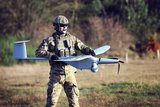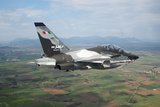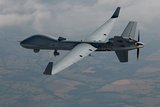DARPA selects Lockheed Martin for ACE programme
ACE aims to better inform pilots with group-level situational awareness and coordinated targeting responsibility. (Photo: US DoD)
Lockheed Martin has been awarded an $11,7 million contract for the Air Combat Evolution (ACE) Technical Area 4 Phases 2 and 3.
The agreement includes the development of full-scale experimentation platforms capable of implementing the ACE algorithms and technologies.
The works will be carried out in Fort Worth, Texas and Tucson, Arizona, with an expected completion date of December 2023.
ACE is run by DARPA and aims to better inform pilots with group-level situational awareness and coordinated targeting responsibility.
ACE Technical Area 3 Phase 2, which focused on learning how to create a symbiosis between air battle managers and the AI-based battle management system, was run by Dynetics, a subsidiary of Leidos.
Dynetics developed a matured approach to battle management, where a single pilot can act as a commander for large-scale and collaborative air warfare.
Phase 1 carried out works on AI architecture design for large force battle management in a Mosaic Warfare construct.
More from Air Warfare
-
![Leonardo signs contract on Austria’s M-346 aircraft order]()
Leonardo signs contract on Austria’s M-346 aircraft order
The first of the 12 M-346 aircraft are expected to be delivered to the Austrian Air Force by 2028, according to the company.
-
![2025 UAV market review: $7.8 billion in new contracts signed as US leads spending]()
2025 UAV market review: $7.8 billion in new contracts signed as US leads spending
Qatar and Indonesia followed the US’s high spending on new uncrewed aerial vehicle contracts across 2025, while MALE and micro drones and loitering munitions were particularly popular subcategories this year.
-
![German Navy in “ramp-up” phase as it welcomes first NH90 Sea Tiger delivery]()
German Navy in “ramp-up” phase as it welcomes first NH90 Sea Tiger delivery
With all 31 aircraft set to be delivered by 2030, the helicopters will gradually replace the ageing Sea Lynx fleet which are due to be retired in 2026.





















